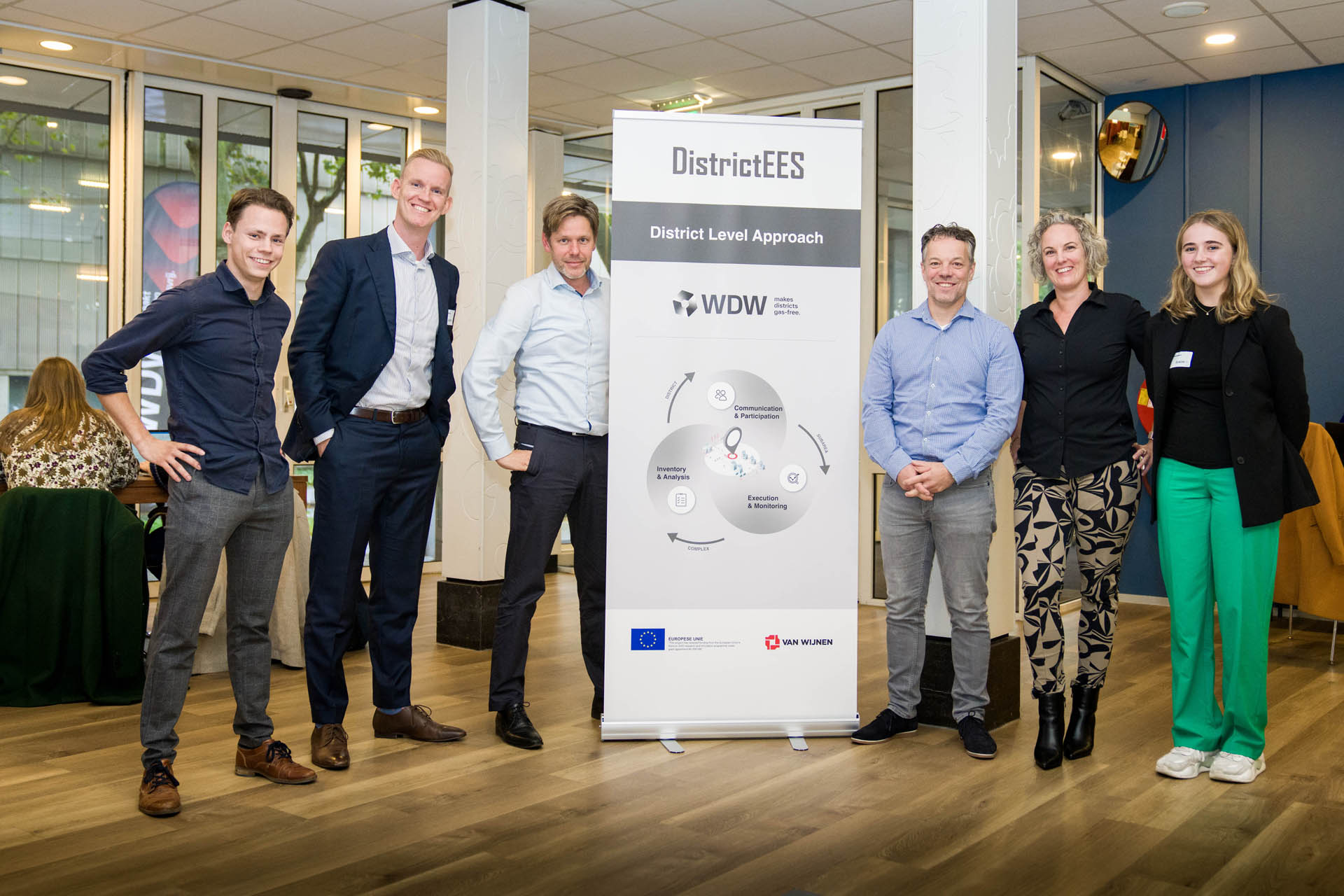
An innovative approach to district transformation
Led by WDW, part of the Van Wijnen construction company, the project capitalised on a district level approach to speed up implementation. This marked a shift from traditional consultancy-led models, which tend to focus on research, often delaying implementation.
The approach is built upon a solid foundation of data collection and analysis, which guides all subsequent steps. By concentrating on sub-areas and implementing measures in phases, it ensures scalability and manageability, striking a balance between affordability and practicality. Visualisation tools, such as the WDW Viewer and the online visitor centre, transform data into accessible and actionable insights for stakeholders.
The focus on sub-areas guarantees a prolonged period of implementing measures, fostering long-term involvement in the district. Additionally, the approach places a special emphasis on stakeholder collaboration, prioritising partnerships with municipalities and housing associations due to their crucial roles in policymaking and large-scale renovation efforts.
Key components of the district level approach include:
- Inventory & Analysis: Detailed data from public sources, housing associations and grid operators is gathered, analysed to understand the current energy performance and infrastructure, and used to develop a sustainability plan.
- Communication & Participation: Engagement with all major target groups – including residents, housing associations, municipalities and grid operators – is facilitated both offline and through an online visitor centre, ensuring a collaborative decision-making process.
- Execution & Monitoring: Creation and implementation of an execution plan targeting building renovations, the installation of renewable energy systems and infrastructure optimisation, while monitoring the impact of the measures to ensure long-term district involvement as well as performance guarantees.
From vision to action
The initiative led to the successful renovation and energetic improvement of more than 400 homes across Overstegen, Oranjewijk and Dieren-West, with investments totalling more than EUR 19 million in sustainable measures such as insulation, energy-efficient installations and solar panel deployment. The total investments led to energy savings of 2.7 GWh/year and a decrease of 1,116 TCO2/year.
Main lessons learned
- Geographical focus: District level scaling is efficient and impactful, striking a balance between policy and volume.
- Importance of data: Comprehensive housing and energy data are essential for targeted and effective renovations and an important base for cooperation.
- Online and offline communication: Tailored communication strategies – balanced both digital and in-person – are critical to success.
- Financing challenges: Aligning diverse investment paces (e.g., housing associations vs. private homeowners) remains a priority for broader adoption. Engaging financial institutions at the right moment is very challenging.
The path forward
Looking ahead, WDW and Van Wijnen plan to expand the district level approach across the three regions of Van Wijnen in the Netherlands. By prioritising data-driven decisions, active stakeholder engagement and practical implementation, DistrictEES offers a tangible roadmap for the transition to gas-free districts.
More
- Project duration
- 1 May 2020 - 31 Dec 2023
- Project locations
- Netherlands
- Overall budget
- €1 136 657
- EU contribution
- €1 136 657100% of the overall budget
- Project website
- DistrictEES project website
- Departments
- European Climate, Infrastructure and Environment Executive Agency

